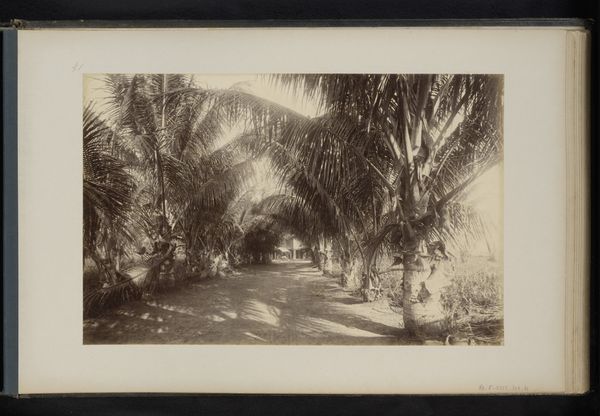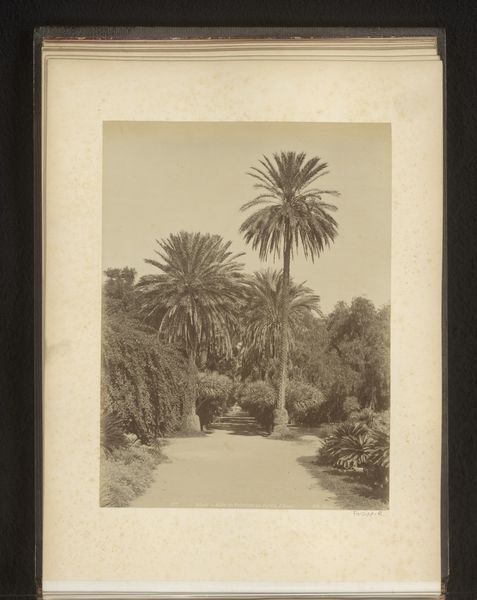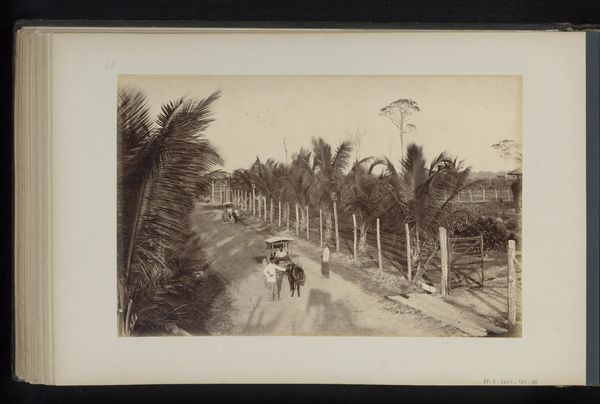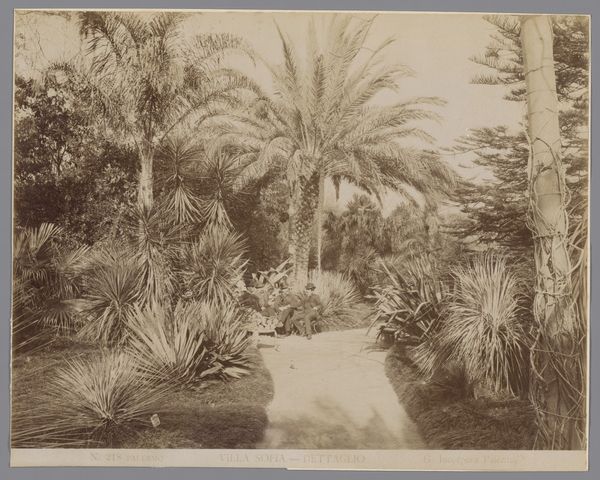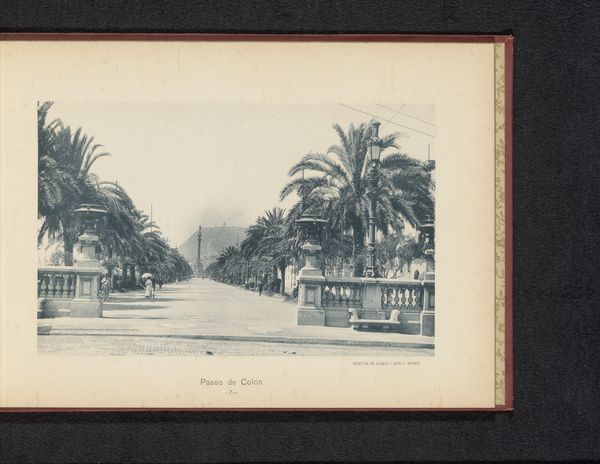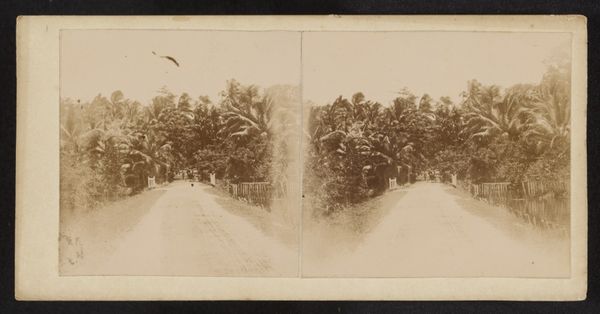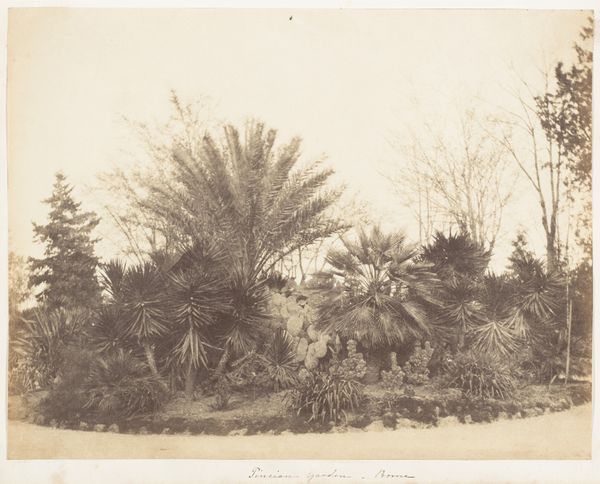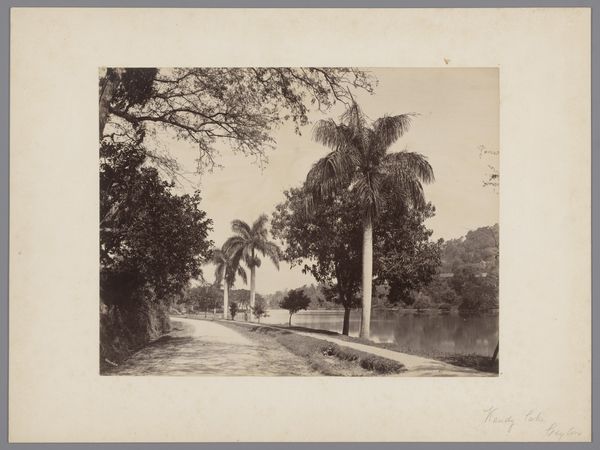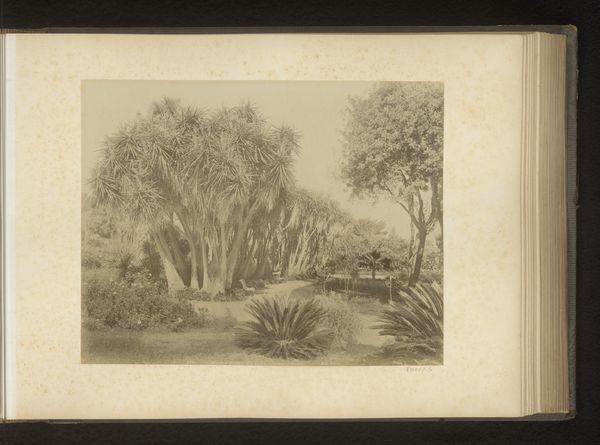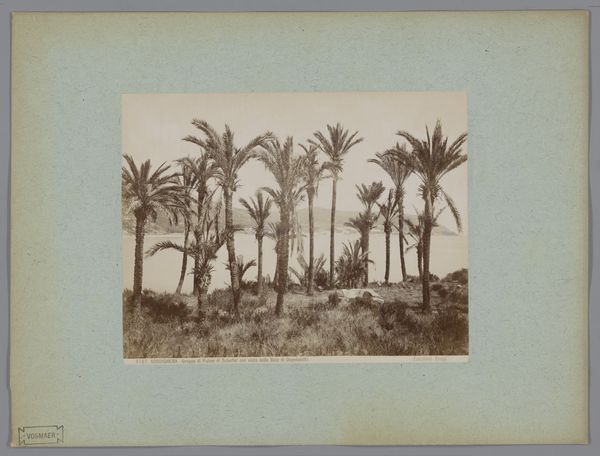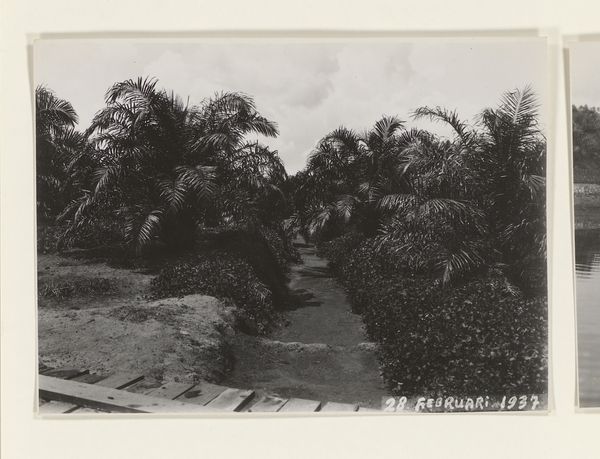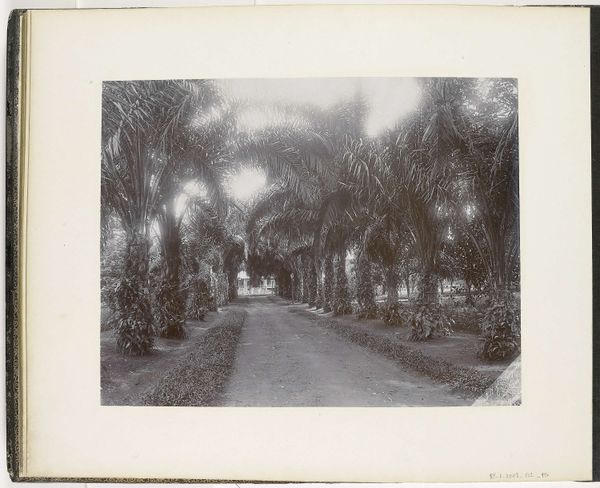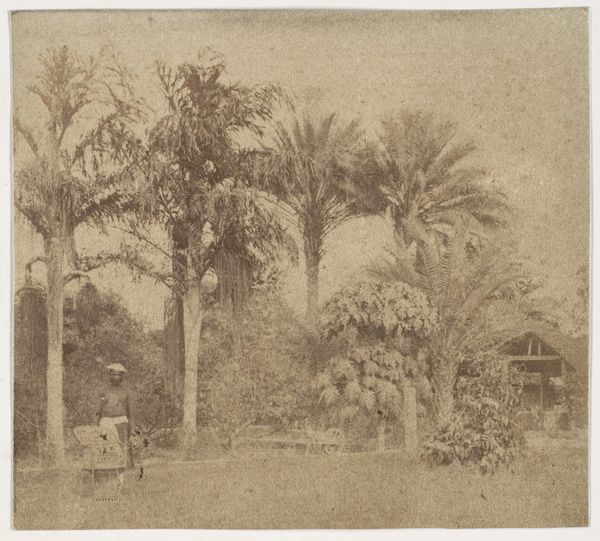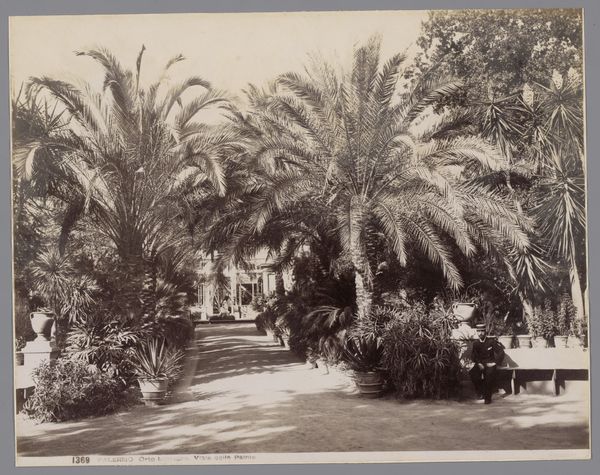
photography, gelatin-silver-print
#
landscape
#
indigenism
#
street-photography
#
photography
#
road
#
orientalism
#
gelatin-silver-print
Dimensions: height 265 mm, width 355 mm
Copyright: Rijks Museum: Open Domain
Curator: This gelatin-silver print, captured between 1890 and 1900, is attributed to Heinrich Ernst & Co. and is titled "Laan met palmbomen in Bekioen, Sumatra"—Palm Avenue in Bekioen, Sumatra. Editor: My initial impression is one of carefully structured chaos. The converging lines of palms, softened by the monochrome palette, create a unique rhythm. It’s interesting how the textures, rough and feathery, contribute to the image's almost tactile quality. Curator: Indeed. These staged photographs were often used to promote the colonial enterprise, painting an idyllic, profitable picture of the Dutch East Indies for audiences back home. The people who are featured in this image play a specific part in illustrating a peaceful street-scene. Editor: I agree. This careful use of tone creates a somewhat romantic perspective on reality. Light and shadow become players on the surface of the paper; yet the high contrast reinforces that it is not meant to be a neutral documentation. The light itself appears to mold the scene into an aesthetically pleasing form, carefully highlighting textures. Curator: That light helps accentuate a certain… dominance. Palm trees, neatly organized, represent control of the natural world. The composition emphasizes the reach of the colonial regime at that time and its aesthetic tastes and values. Editor: While it certainly speaks to that colonial perspective you mention, one might still ask what intrinsic aesthetic value it has as an image, independently of its propagandistic utility. For instance, the deliberate choice of the black and white adds something timeless. This makes us aware of composition and contrast, the light hitting palm fronds against that dusty road. It goes beyond pure information. Curator: True, but can we truly separate form from historical context in this case? Consider its location now, the Rijksmuseum, places of curation, display and the political work behind that. This location is inseparable from the interpretation and reception of this image. Editor: A fair point. Location undeniably influences our interpretation. However, the photograph’s internal logic—its contrasting tonalities and the textured avenue that draw our eyes to an unknown distance—also exerts its pull, inviting viewers beyond its complex historical framing. Curator: Ultimately, the image leaves us contemplating both the constructed beauty and the complex power dynamics of a bygone era. Editor: Yes, where formal structure underscores a constructed reality steeped in imperial ambition. It makes one consider the multifaceted nature of seeing.
Comments
No comments
Be the first to comment and join the conversation on the ultimate creative platform.
